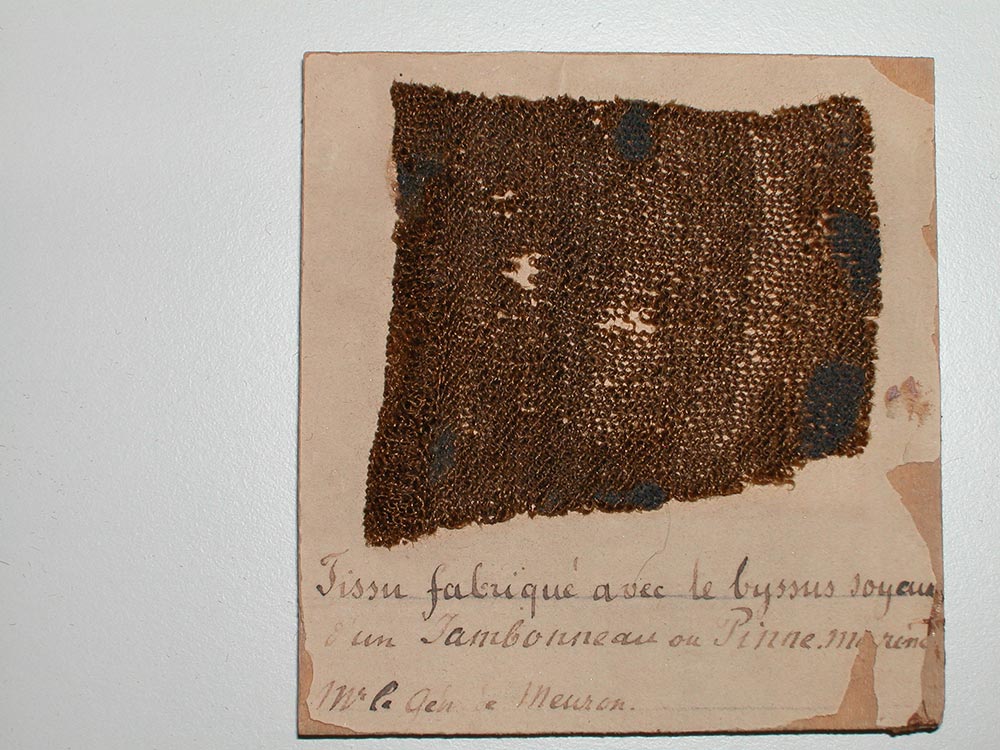Knitted fragment, 18th c.
Knitted fragment, 18th century, origin unknown. CH-Neuchâtel, Muséum d’Histoire naturelle (MS inventory 9).
Sea silk, plain right knit, ca 3.2 x 4.6 cm, cover left side 7 mm, otherwise cut edges.
The fragment is glued with the right side on a support (5.3 x 5.7 cm). On it is written by hand: “Tissu fabriqué avec le byssus soyeux d’un Jambonneau ou Pinne marine, M. le Gen.l de Meuron”.
The history of this fragment is enigmatic. The Cabinet d’histoire naturelle of Général Charles D. de Meuron (1738-1806) forms the basis of the Musée d’Ethnographie and the Muséum d’histoire naturelle in Neuchâtel. In a late 18th century catalogue on this cabinet, this fragment is described as “Morceau d’amadou des hottentots proven[an]t d’une plante, imitant un bas”. Were different objects confused? Amadou (Fomes fomentarius) was once used to make textiles, but hardly any knitted ones. In the same catalogue a Pinne marine is listed among the mussels (bivalves). It is therefore possible that the fragment and the fan shell belonged together in the collection.
In a publication of the Muséum d’histoire naturelle in Neuchâtel of 1985 we see the fragment, together with the lady’s glove (MS-inventory 8), a fan shell and a fibre beard: “Le petit échantillon de tissu provient des Antilles: c’est un des plus anciennes pièces du Musée puisqu’elle fut collectée en 1758 par Charles-Daniel de Meuron, alors jeune officier de la marine royale française”, (in English: The small sample of fabric comes from the West Indies: it is one of the oldest pieces in the Museum, since it was collected in 1758 by Charles-Daniel de Meuron, then a young officer in the French Royal Navy. However, it can be assumed that the fragment originates from Europe.

